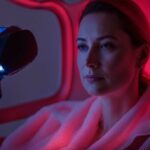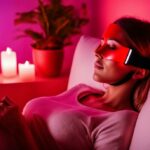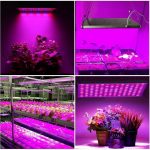Blue light therapy has gained popularity as a non-invasive treatment option for acne. While it’s believed to be effective in reducing acne symptoms, some are concerned that it may actually worsen acne in certain cases. In this discussion, we will explore whether blue light therapy can make acne worse and the factors that contribute to it.
Contents
Understanding Blue Light Therapy
Blue light therapy is a popular treatment for acne that uses blue light wavelengths to kill the bacteria that cause acne. The treatment is non-invasive and typically takes around 15 to 30 minutes per session. It is often used in conjunction with other acne treatments such as topical creams and oral medications.
The Science Behind Blue Light Therapy
Blue light therapy works by penetrating the skin and stimulating the production of oxygen radicals in the bacteria that cause acne. These radicals damage the bacteria’s cell walls, killing them and reducing the severity of acne breakouts.
The Benefits of Blue Light Therapy
Blue light therapy has been proven to be an effective treatment for acne, with many patients reporting a significant reduction in the number and severity of acne breakouts. It is also non-invasive and does not cause scarring or other skin damage like some other acne treatments.
Misconceptions About Blue Light Therapy
Despite its many benefits, there are some misconceptions about blue light therapy and its potential to make acne worse.
Can Blue Light Therapy Cause Acne?
One common misconception about blue light therapy is that it can cause acne. However, this is not true. Blue light therapy is a safe and effective treatment for acne that does not cause breakouts.
Another common misconception about blue light therapy is that it can make acne worse. While it is possible for some patients to experience an initial increase in acne breakouts after starting blue light therapy, this is typically a temporary side effect that subsides as the treatment progresses.
Understanding the Initial Breakout Period
The initial breakout period is a common occurrence when starting any new acne treatment, including blue light therapy. During this period, the skin may become more inflamed and breakouts may become more severe. This is due to the treatment bringing pimples that are below the surface to the surface to be treated. However, this breakout period typically only lasts for a few weeks, and then the skin begins to improve.
Understanding the Importance of Consistency
Another factor that can lead to negative outcomes with blue light therapy is inconsistency. Patients who do not commit to regular treatments may not see the full benefits of blue light therapy. Skipping treatments or only doing them sporadically may not be enough to kill the bacteria that cause acne and prevent future breakouts.
Understanding the Importance of Follow-Up Care
Finally, it is important to remember that blue light therapy is not a one-time cure for acne. While it can be effective at reducing the number and severity of breakouts, it is important to continue to follow up with a dermatologist or other healthcare provider to ensure that the acne is properly managed. This may involve using additional treatments in conjunction with blue light therapy, such as topical creams or oral medications.
FAQs for Can Blue Light Therapy Make Acne Worse
What is blue light therapy, and how does it work?
Blue light therapy is a type of treatment used to help improve acne. It works by directly targeting the bacteria that causes acne, known as Propionibacterium Acnes (P. Acnes), which lives on the skin’s surface. The blue light from the therapy penetrates deep into the skin, where it triggers a chemical reaction that eliminates P. acnes bacteria, ultimately reducing the appearance of acne.
In general, blue light therapy is a safe and effective treatment for acne. However, it’s possible for some individuals to experience a temporary worsening of their acne after the initial treatments. This is because as the therapy activates the chemical reaction that eliminates bacteria, it also causes inflammation, which can lead to an initial breakout. This is not uncommon and typically only lasts for a few days to a week.
How long does it take for blue light therapy to work?
The time it takes for blue light therapy to work varies depending on the severity of the acne being treated. Typically, most people require anywhere from 4-8 treatments over a 4-6 week period. However, it’s important to note that individual results may vary, and some people may require more or fewer treatments to see optimal results.
Is blue light therapy safe for everyone, or are there any risks involved?
For the most part, blue light therapy is a very safe and low-risk procedure. The most common side effects of the therapy include mild redness and swelling, both of which typically subside within a few hours of treatment. However, it’s worth noting that individuals who are taking medication or supplements that make them more sensitive to light, such as certain antibiotics, should consult with their healthcare provider before undergoing blue light therapy, as it may not be a safe treatment option for them.
Can blue light therapy replace traditional acne treatments, such as topical and oral medications?
Blue light therapy is a very effective acne treatment; however, it’s generally not a replacement for traditional acne treatments such as topical medications (like benzoyl peroxide) or oral medications (like antibiotics). Instead, it’s often used in combination with these treatments to help maximize their effectiveness.







